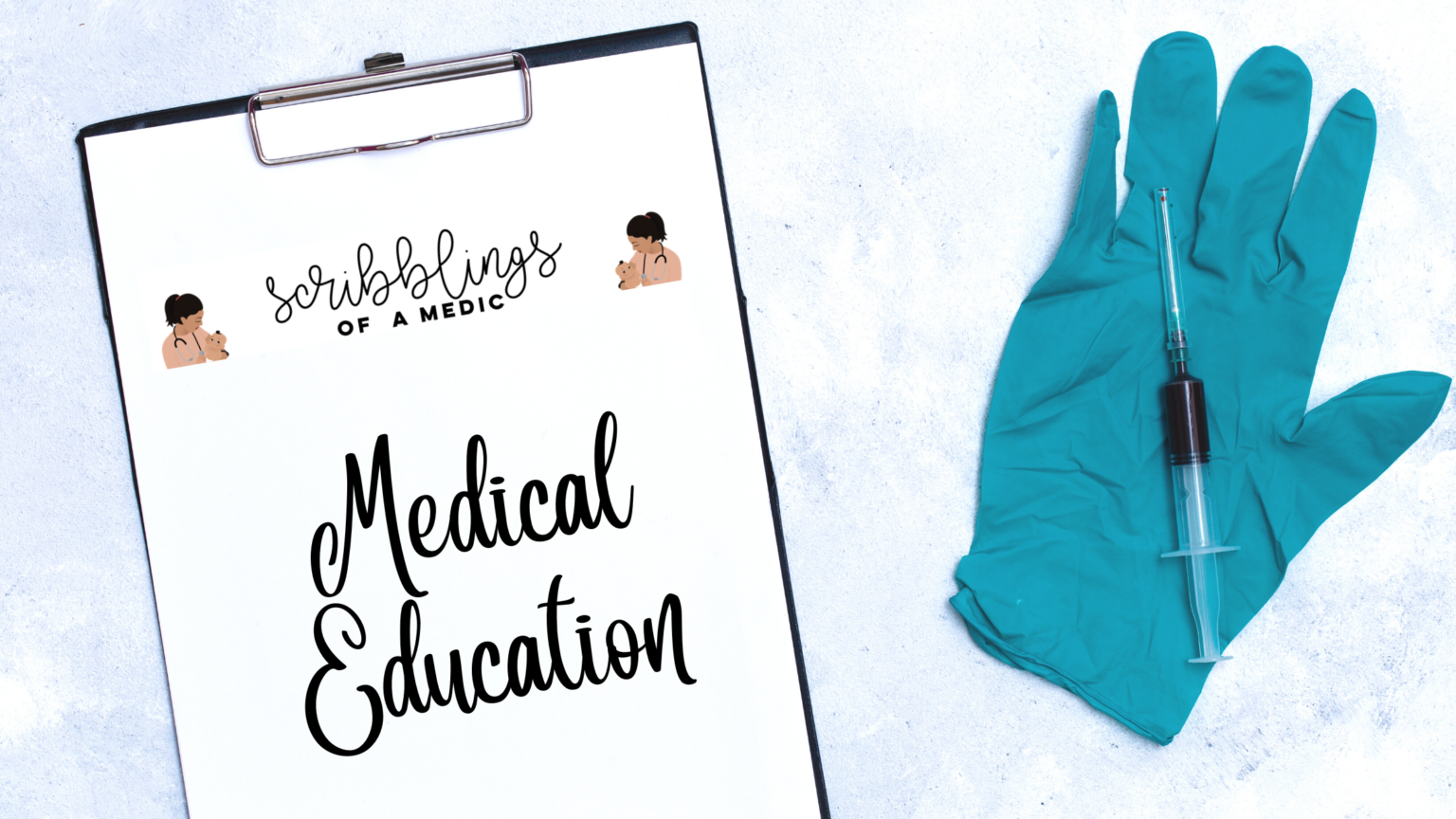Active pulmonary tuberculosis is still today a threat in many developing countries. Surprisingly, the UK also has to deal with the occasional odd encounter with tuberculosis due to the migration.

Dr. Devina Siaw is a Newcastle University medical graduate and currently works as an SHO doctor in General Medicine at the Royal Lancaster Infirmary, United Kingdom. She has a special interest in respiratory medicine and hopes to pursue a career in this field. In addition to medicine, Devina loves to travel and critic food in her spare time. Her instagram (@feedbujuju) bio accurately describes her as “in endless pursuit of superb gustatory experiences”. Read on below about her encounter with the mysterious mycobacterium tuberculosis.

On a personal note, Devina is a close friend from medical school. We were always in the same clinical group, we organised charity events together and also did our medical electives together in Melbourne, Australia. Travelling and eating were 2 of our favourite things to do together. Needless to say, she was a significant part of my medical school life and I miss her & her humour terribly. We still manage to see each other every couple of years though!
Can’t wait to see you again Dev ❤ Thank you for writing this article!
A brief clinical picture
A 67 year old gentleman of Pakistani origin presented on the acute medical take with a one week history of fever, rigors and productive cough. His past medical history consisted of type 2 Diabetes Mellitus and a previous NSTEMI 5 years prior.
His initial investigations showed raised inflammatory markers and the chest x-ray demonstrated blunting of both costrophrenic angles (right> left). He was initially treated empirically for community acquired pneumonia which is more commonly seen in the UK. Four days into his admission his cough was improving and no longer productive. His inflammatory markers were also on the downward trend, but he was still having temperatures, especially in the evenings with rigors and feeling generally unwell.
Blood cultures showed no growth and his urine for legionella and pneumococcal antigen were negative. There were no symptoms or signs suggesting another focus of infection.
With the availability of multidisciplinary management, the respiratory team became involved due to concern regarding the possibility of an empyema formation. On pleural ultrasound scan, a 1cm pocket of fluid was found on the right side. This was deemed inadequate for aspiration. There was no fluid detected on the left side.
His antibiotics were escalated to IV Tazocin after discussion with the microbiology team. At 7 days post admission he was still having fevers and feeling generally unwell. On further questioning about his travel history, he divulged that he had arrived in England 30 years previously. He does however travel to Pakistan every 2-3 years and his brother was treated for tuberculosis previously, but he was unsure if he had completed his course of treatment.
The infectious diseases team then also became involved and took over his care for suspected tuberculosis. His induced sputum later came back positive on smear for acid-fast bacilli and he was given a final diagnosis of active tuberculosis.
Introduction
My 8 months as a SHO in infectious diseases has taught me an important lesson about the world of microbes; it is vast, deadly and overwhelmingly confusing. The mycobacterium family is possibly one of the biggest in terms of variation between its members. I am far from an expert in infectious diseases, but hopefully this blurb will help provide a bit more insight into the star of this family: Mycobacterium Tuberculosis (nicknamed TB).
Working in a country with a generally lower prevalence of TB and when in a non-infectious disease setting, my experience is that there tends to be a delay in considering that someone who has features of infection not improving with antibiotics may have TB. As a result, often patients languish in hospital for a good week or two with their symptoms before someone considers sending samples to test for TB.
Getting to know TB
TB is spread through the air when bacteria are aerosolised from someone with pulmonary TB. Prolonged exposure (not the kind of ‘hi, bye’ thing we do with patients on the ward round) and multiple aerosol inocula are needed to establish infection. Thankfully TB, like its’ descendents the vampire, are killed by UV light, reducing the risk of transmission outdoors. TB is a chronic granulomatous disease caused by m. tuberculosis.
NB: please note that I was joking that vampires descended from TB; there is no actual proof they exist.
Why is TB even important and who cares?
According to the WHO’s 2017 TB report: TB remains at large and is the 9th leading cause of death worldwide. It is the number one cause of death from a single infectious agent, outranking HIV/AIDs. An estimated 6.3 million people were diagnosed with TB in 2016 (in addition to people already diagnosed with the disease).
Symptoms and signs
Similar to the black market, TB is not fussy when it comes to organs; it will happily reside and propagate in whatever it can find. Whilst most commonly found in the lungs, it can be also found in lymph nodes, the central nervous system, bones, adrenals, the gastrointestinal tract and the genitourinary tracts.
In pulmonary TB you can expect:
- General symptoms: Fever, night sweats, weight loss (Once I thought I had TB because I had a chronic cough, but my friend laughed and told me this was unlikely because I hadn’t lost any weight- ‘It’s called consumption for a reason’ she told me whilst cackling), lymphadenopathy, malaise and anorexia.
- Respiratory symptoms: Cough, haemoptysis
Do look for any extrapulmonary signs and symptoms if TB is suspected, you might find lymphadenopathy, hepatomegaly, splenomegaly, bone/ joint pain, cranial neuropathies, headaches and for the brave, scrotal swelling.
Risk factors
- Having lived in Asia, Latin America, Africa or Eastern Europe for years (basically 75% of the world).
- Exposure to an infectious TB case
- Residence in an institutional setting (for example, prisons)
- Homelessness
- Immunosuppression (mainly HIV, but don’t forget about immunosuppressive drugs, diabetes, malignancy, renal disease, etc)
- Substance misuse
- Overcrowded living situations
Unfortunately patients with social risk factors are more likely to have TB, multidrug resistant (MDR) TB, to be lost to follow-up and also to die.
Don’t get caught out! Have a high index of suspicion when it comes to TB and consider it in patients with fever of unknown origin or persistent cough despite treatment. Remember to give patients with suspected TB some privacy (ie. side room).
Mimics
Pretty much any pathology in the lung can give you a combination of the above signs and symptoms; differentials of TB include:
- Pneumonia
- Lung cancer/ metastases
- Lymphoma
- Non tuberculous mycobacteria
- Lung abscess
- Pulmonary embolus
- Autoimmune or granulomatous diseases (Granulomatosis with polyangiitis- previously known as Wegeners, sarcoidosis)
- Aspergilloma
Investigations
- Bloods – FBC (anaemia can be common), renal profile, baseline liver profile and blood cultures.
- If disseminated TB is suspected- mycobacterial cultures are required.
- HIV/TB co-infection is common so a blood borne virus screen is needed.
- At least 3 early morning sputum samples need to be sent for acid-fast bacilli (AFB) smears and cultures. Smears only confirm the presence of AFB, but there are many types so TB needs to be confirmed on culture. Induced sputum is an option in patients with a non productive cough or washings from a broncho-alveolar lavage can be obtained.
- NAAT (nucleic acid amplification test) can provide rapid diagnosis and information on rifampicin resistant TB.
- Imaging: CXR: Classical findings include cavitating lesions, hilar adenopathy, miliary nodules and pleural effusions. Be aware as the CXR can be normal.
- USS abdomen and spinal X-rays may also be done to rule out spread.
- CT thorax may provide information and help exclude other differentials.
- If pleural TB suspected- pleural fluid can also be sent for investigation or pleural biopsy.
- Baseline visual acuity and colour vision.
When it’s time for TB to move on
Early recognition and implementing effective treatment is important in interrupting transmission. The NICE guidelines recommend starting treatment without waiting for culture results if the symptoms and signs are consistent with TB.
Ideally patients with TB need to be cared for by someone who knows what they are doing; refer them to a centre for specialised care of TB patients. Remember that TB treatment can be almost as nasty as having TB to some patients, DOTS (direct observation of therapy) is highly recommended to ensure compliance.
Empirical treatment: RIPE (rifampicin, isoniazid, pyrazinamide, ethambutol) for 2 months. This is now available in a combination tablet called Voractiv. This is followed up with 4 months of rifamipicin and isoniazid (found as the tablet Rifinah). Patients also need to be on pyridoxine to prevent isoniazid induced peripheral neuropathy.
Repeat the AFB smear and culture after 2 months. Treatment may need to be extended if cultures are still positive.
Monitor the following:
- Urine: Bright orange indicates there is compliance to treatment
- For peripheral neuropathy
- LFTs (rifampicin and isoniazid can cause derangement)
- Deterioration in vision (ethambutol can cause optic neuritis)
Be aware that treatment can interfere with other medications, most notably antiretrovirals, warfarin and contraceptives.
Lastly, TB is a notifiable disease and contact tracing should be done (mantoux test used).
I hope that this has helped you, and more importantly your patients. If there are any questions, or corrections please do let me know!
References
- Pulmonary tuberculosis – Symptoms, diagnosis and treatment | BMJ Best Practice. (2018). Retrieved from https://bestpractice.bmj.com/topics/en-gb/165
- (“DynaMed Plus | Evidence-based content | EBSCO”, 2018)
- Tuberculosis in England: 2017 report. (2018). Retrieved from https://assets.publishing.service.gov.uk/government/uploads/system/uploads/attachment_data/file/686185/TB_Annual_Report_2017_v1.1.pdf
- Tuberculosis | Guidance and guidelines | NICE. (2018). Retrieved from https://www.nice.org.uk/guidance/ng33/chapter/Recommendations
- Global Tuberculosis Report 2017. |World Health Organisation. (2018). Retrieved from http://apps.who.int/iris/bitstream/handle/10665/259366/9789241565516-eng.pdf;jsessionid=1CDFB771ACD96B3BFA730CDA89E51686?sequence=1
- Tuberculosis (TB). (2018). Retrieved from https://www.nhs.uk/conditions/tuberculosis-tb/treatment/





